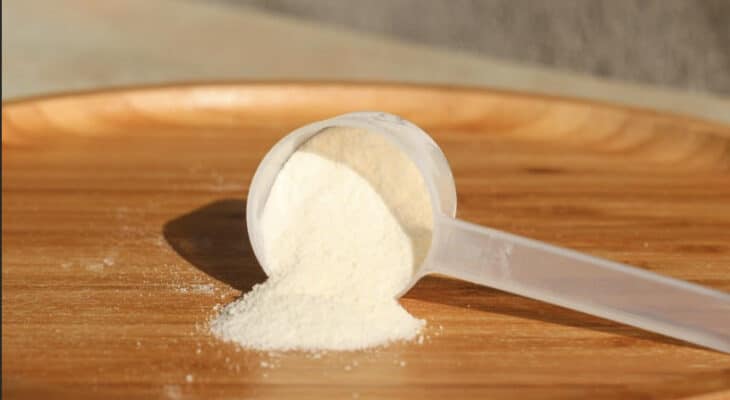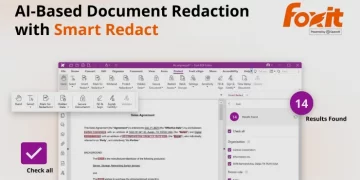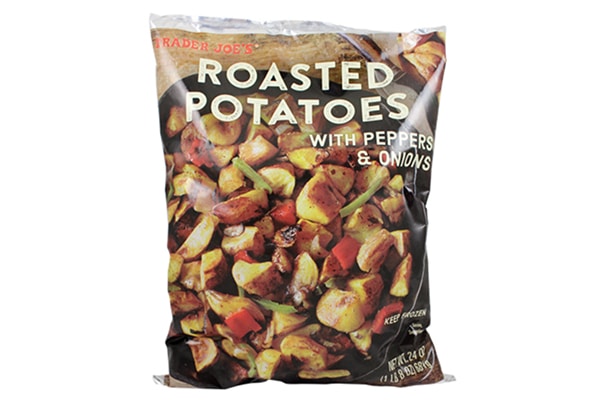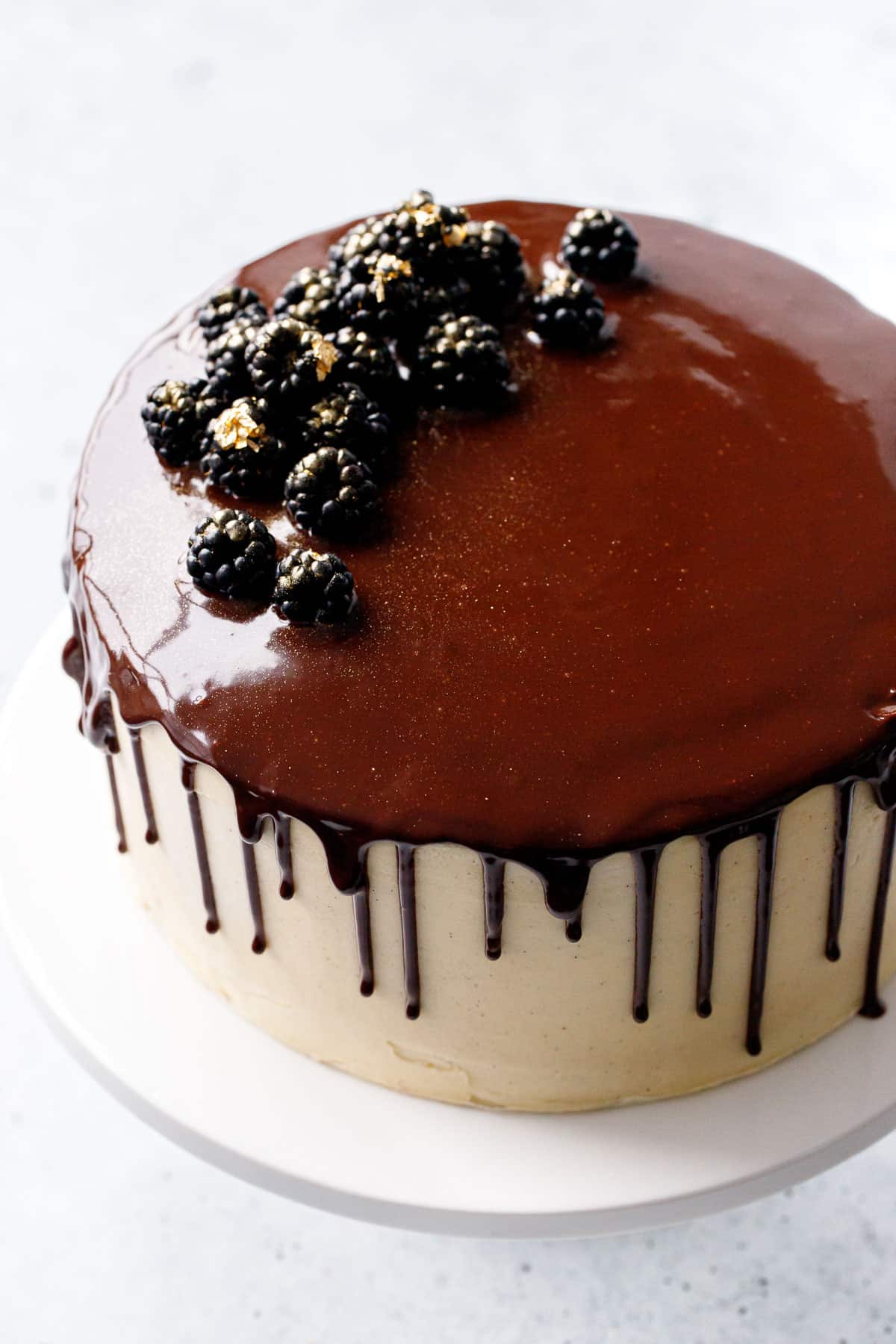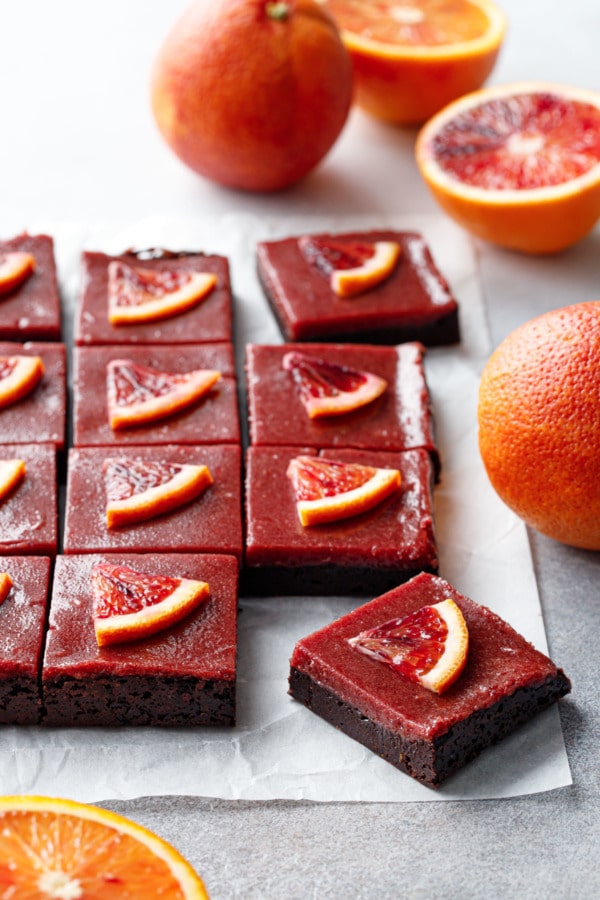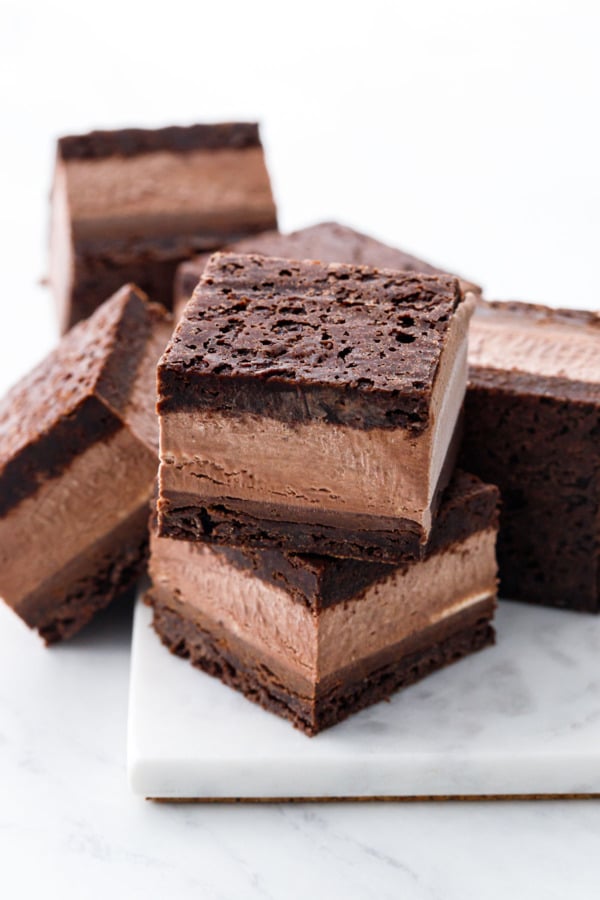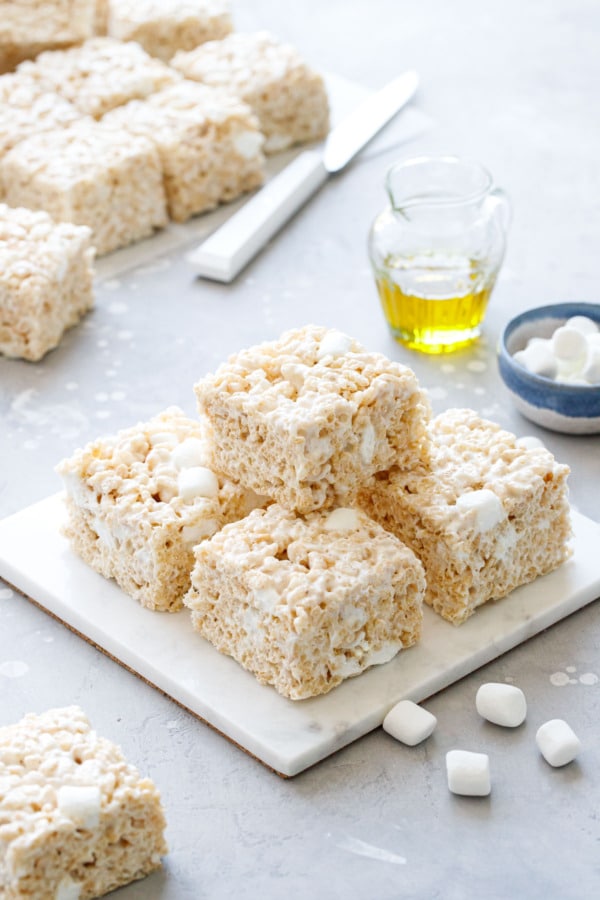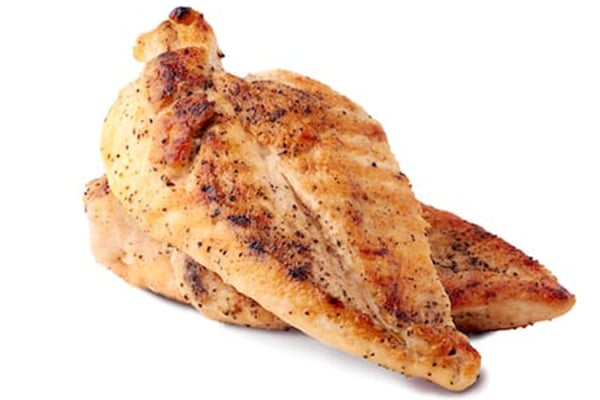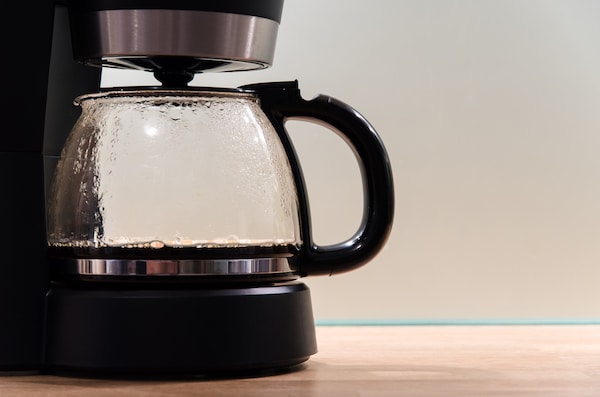These ultra thin and delicately crispy parchment crackers are made with semolina flour and sourdough starter for a yeasty, buttery flavor that’s perfect for your next charcuterie board.
Homemade crackers are worth the effort, especially in the case of these parchment crackers that are almost supernaturally thin and crispy, made with the help of a pasta roller and a pizza stone.
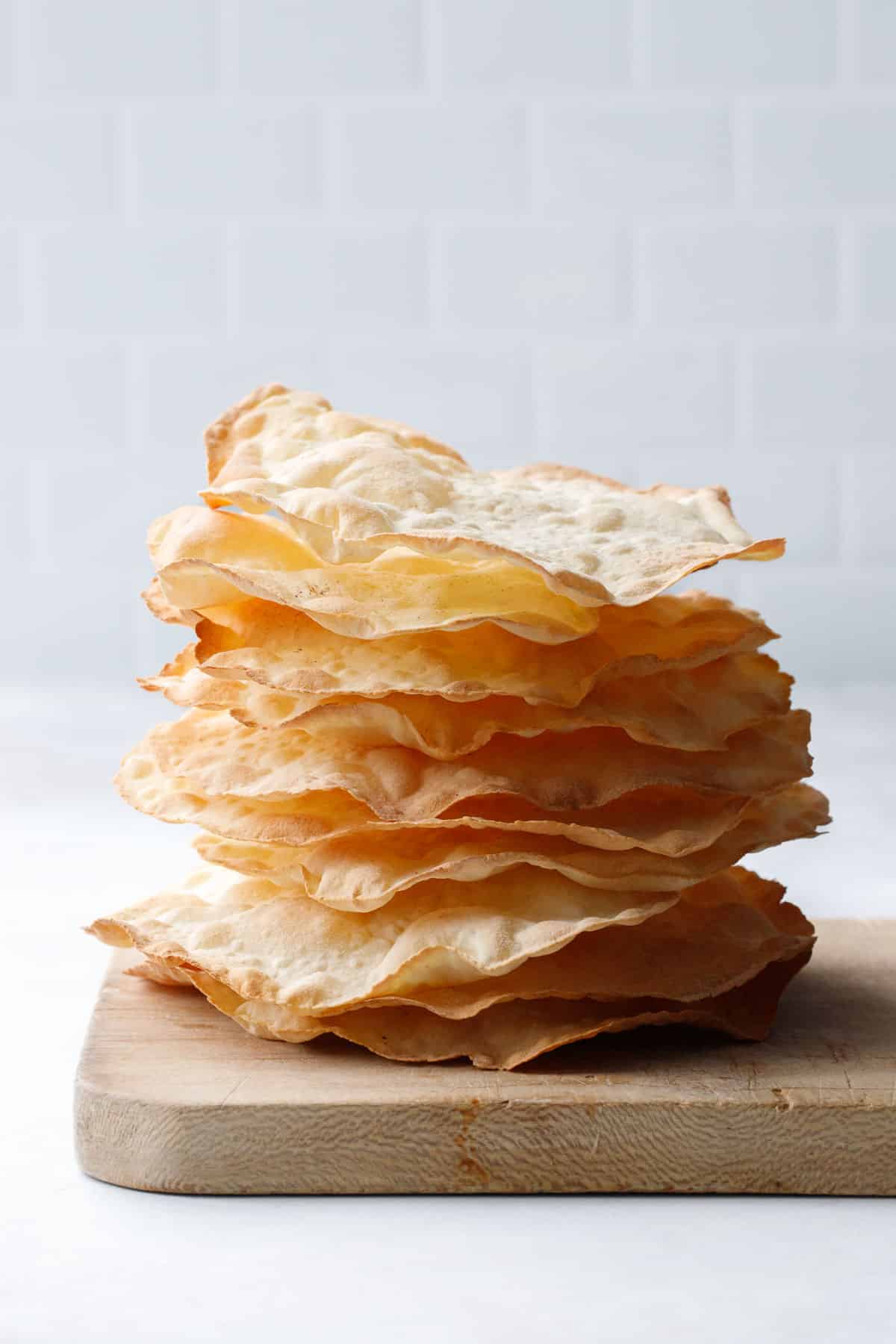
Homemade crackers bring me great joy, from cheese to more cheese to everything seasoning.
But out of all the crackers I’ve ever made, these might just be my favorite (and if you know me, you know I don’t throw around terms like best or favorite lightly).
Imagine, if you will, the thinnest, crispiest cracker you’ve ever eaten, so thin it almost melts in your mouth. Lightly seasoned with little more than sea salt, the toasty, slightly yeasty flavor of the cracker serves as a perfect foundation for infinite topping possibilities (a smear of soft, ripe cheese and a dollop of pepper jelly is my personal favorite).
Just imagine how impressive your next charcuterie board will be with a tower of these golden brown, bubbly beauties taking center stage. Stack them on the platter alongside various cheeses, meats, and preserves, and let your guests break off pieces of the shatteringly-thin crackers themselves. Sure, it’ll probably make a huge mess (I did not say these crackers were in any way practical), but the fun and flavor is totally worth it.

This recipe was inspired by a cracker that Trader Joe’s used to sell, called pane guttiau (Sardinian parchment crackers), that were the lightest, crispiest things we’d ever tasted, and we absolutely adored them. I haven’t seen them in the store for years now but that doesn’t stop me from looking every time. I missed them so much, I figured why not try to make my own?
Pane carasau is another name for these thin and crispy crackers, meaning toasted bread (whereas pane guttiau means dipped bread, not necessarily a different kind of cracker but rather a different presentation of the same thing, seasoned with olive oil and herbs).
There is also another thin semolina-based cracker called carta di musica, or sheet music crackers, also originating from Sardinia. These crackers are named for their similarity in appearance to the traditional parchment on which sheet music was written (I’ve also heard they’re called this because you should apparently be able to read sheet music through the thinly rolled dough).
Pane carasau and carta di musica are often used interchangeably to refer to this style of super thin and crispy semolina crackers, but after browsing dozens of different recipes across the internet it seems that, in general, pane carasau are usually yeasted crackers, while carta di musica are not.
If I am correct in my assumptions here, then this recipe, which uses sourdough discard (containing natural yeasts), is technically more similar to the parchment crackers (a yeasted recipe), although I make no claims to authenticity whatsoever. You can also make a non-sourdough variation (see below) in which case they’d be more similar to unyeasted carta di musica. The yeast isn’t providing any rise since the dough is rolled paper thin, but it most certainly affects the final flavor of the cracker.
Either way, semolina flour is the primary distinguishing factor in these Sardinian style crackers compared to other kinds of crackers. In particular semolina rimacinata flour which is finely milled semolina flour (primarily used for pasta making) that is higher in protein than regular wheat flour, and also adds a rich golden hue and buttery flavor to the final baked cracker.
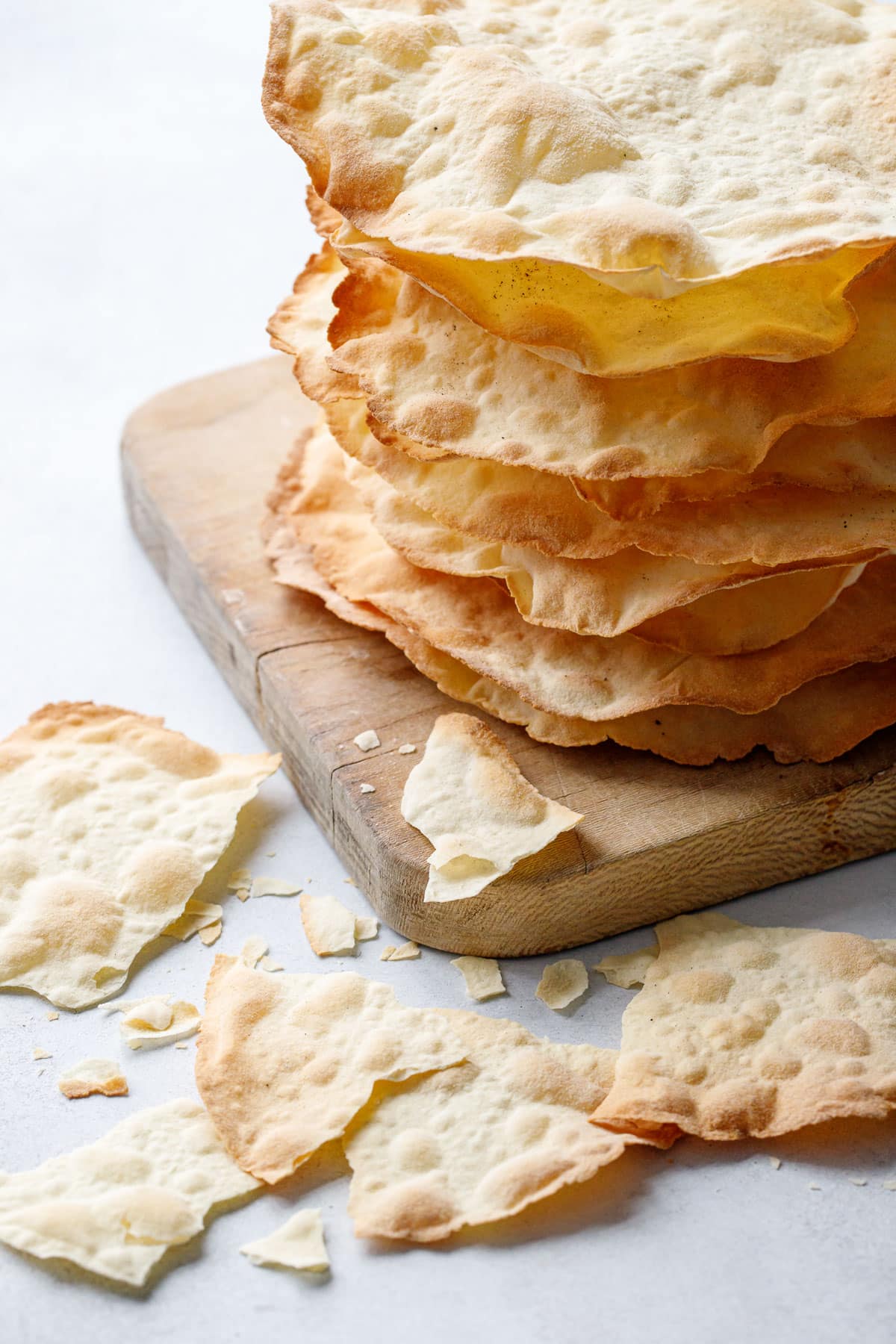
Don’t Discard Your Discard
This recipe calls for sourdough discard, which is the bit of sourdough starter you’d normally discard before a fresh feeding.
You can technically use sourdough discard collected from any stage in the sourdough-making process, although I recommend it be at least 12 hours after the last feeding.
If your discard is older (I usually collect a little bit here and there and keep it in the fridge until I have enough to make a batch of crackers… or biscuits or pancakes or muffins), the sour flavor in the final cracker will be much more pronounced than from a freshly-fed batch.
This recipe assumes a 100% hydration starter, meaning it’s been fed with equal parts (by weight!) flour and water. My sourdough starter is an all white flour starter, which is what I recommend for this recipe, but a partial whole wheat or rye starter will work in a pinch (the texture will be a bit denser), but I do not recommend a 100% wheat/rye starter.
For conversion purposes, when referring to a 100% hydration sourdough starter, 200g of starter means 100g flour and 100g water. Helpful to remember in case you don’t quite have enough starter and need to top it up (say you only have 150g starter, you can add 25g flour and 25g water to equal 200g total). Yay for sourdough math!
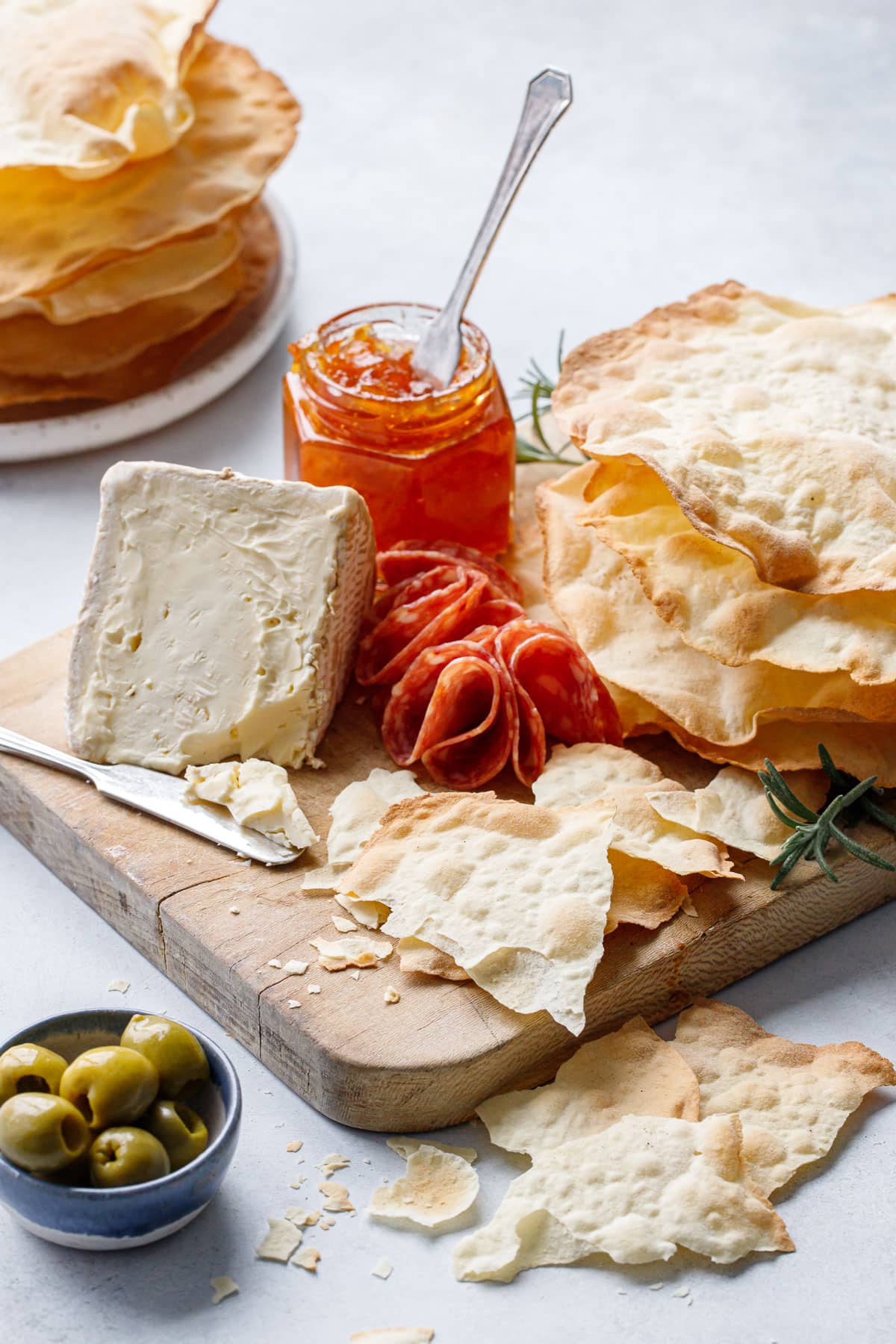
Non-Sourdough Variation
No sourdough starter? No worries! You can still enjoy a batch of crispy homemade crackers in no time.
Option 1: plain. This recipe works perfectly well if you substitute equal parts all-purpose flour and water (100g each by weight) in place of the sourdough starter. The final crackers will be somewhat more one-dimensional in flavor, since you don’t have the extra depth from the developed yeasts. But it still works! Since the flour is not pre-hydrated, you may need a little more water (more like 120g or so) to bring the dough together.
Option 2: yeasted. If you don’t have a sourdough starter but want to mimic the yeasty flavor in your crackers, just plan ahead. Mix together 100g each of flour and water the night before along with 1/8 teaspoon of dry yeast. Let it sit overnight, then use that as your ‘starter’ as called for in this recipe. You’re essentially making what’s known as a poolish, or pre-ferment (I use a similar technique in my favorite pizza dough recipe). The poolish method won’t have quite as strong a flavor as sourdough starter, but you’ll get some nicely developed yeasty flavor coming through in the final bake. Again, the yeast here is solely for flavor, it doesn’t change anything about the texture of the final crackers.
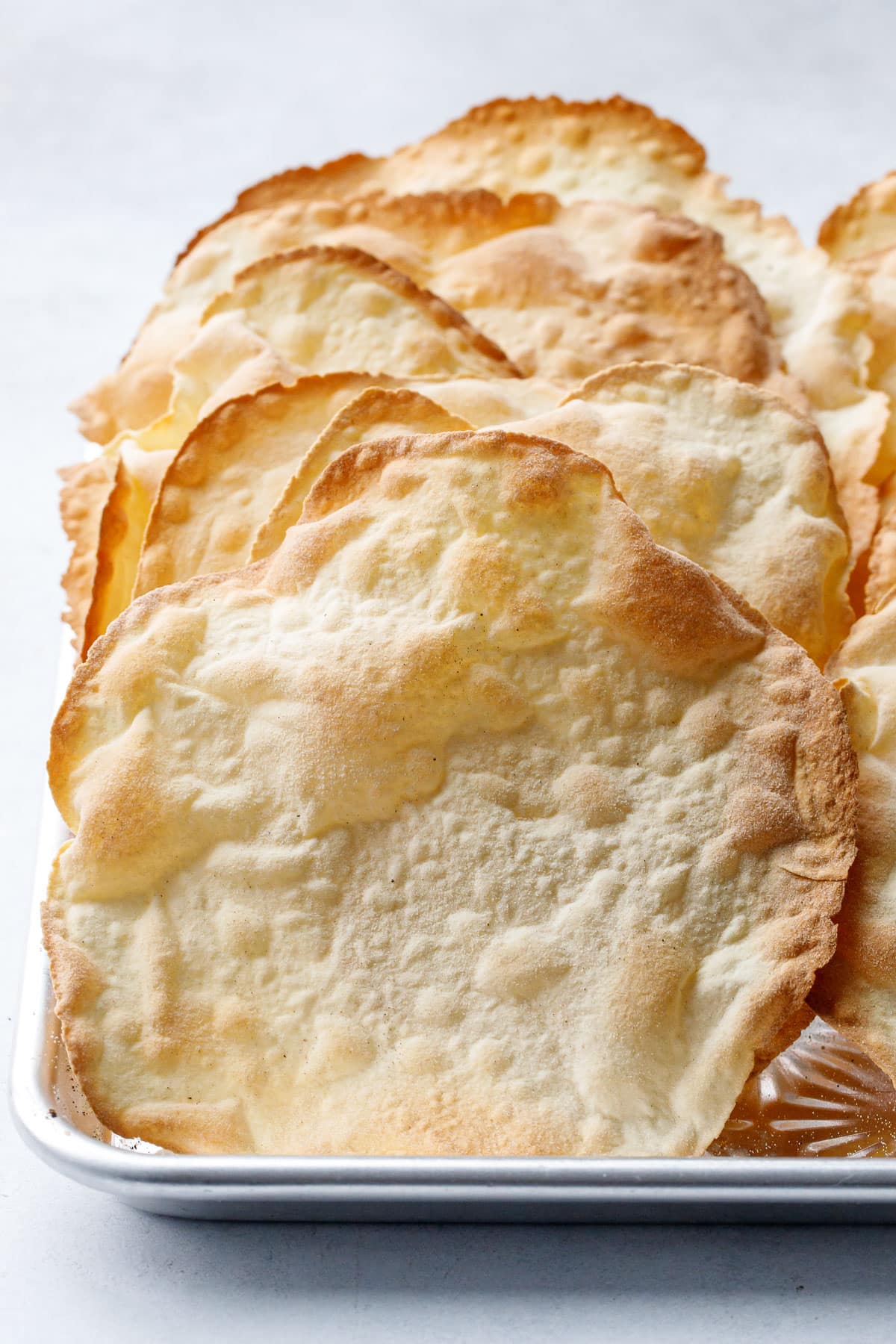
Thin & Crispy
Rolling the dough as thin as possible is the key to producing perfectly delicate, crispy crackers.
I used my pasta roller first, but even the thinnest #8 setting wasn’t quite thin enough, so I rolled it even thinner with a rolling pin after running it through the pasta machine. You can also roll it entirely by hand if you like.
How thin, exactly? Well, if you put a piece of paper with writing underneath the dough, you should be able to see black and white contrast through the dough. You won’t be able to read small text or anything, but should be able to see at least the contrast between black and white.
Thicker crackers are certainly doable if you prefer something more sturdy, but I found that thicker dough likes to puff up a lot more with larger bubbles. For that reason I recommend docking the rolled dough with a fork; pricking all over the surface of the dough will prevent large bubbles from forming. If the dough is rolled out super thin to begin with, this is not as much of an issue.
Note that, because it is rolled so thinly, I do not recommend adding large seasonings to this dough, like coarse black pepper, dried rosemary or thyme, or sesame seeds for example. These larger particles will cause tears in the dough when you run it through your pasta machine. If you insist on seasoning the dough (I don’t think it’s needed, but hey, you do you), stick to very finely ground herbs and spices like garlic powder or paprika.
-
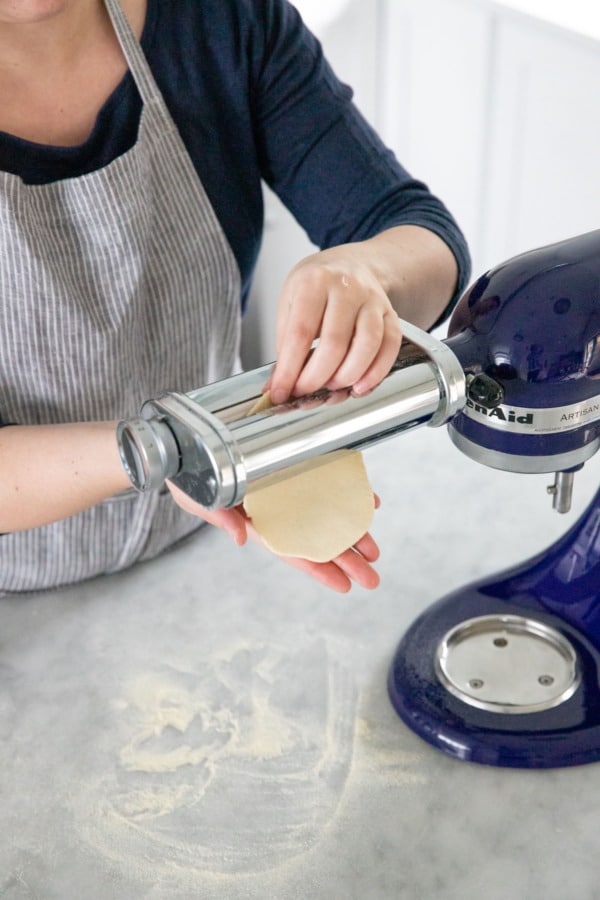
- Run small balls of dough through a pasta roller, going one notch thinner with each pass.
-
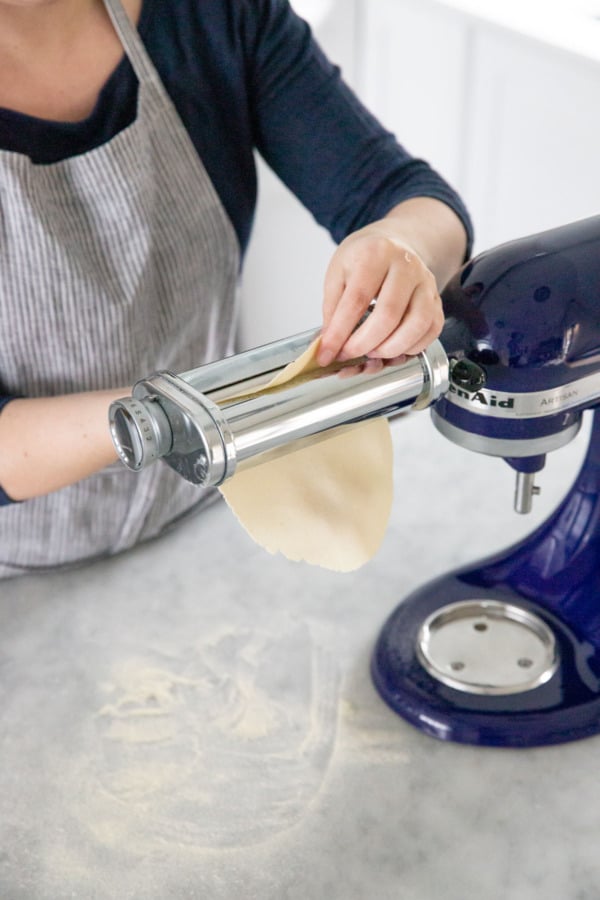
- Roll the dough as thin as your pasta machine will go (setting #8 for me).
-
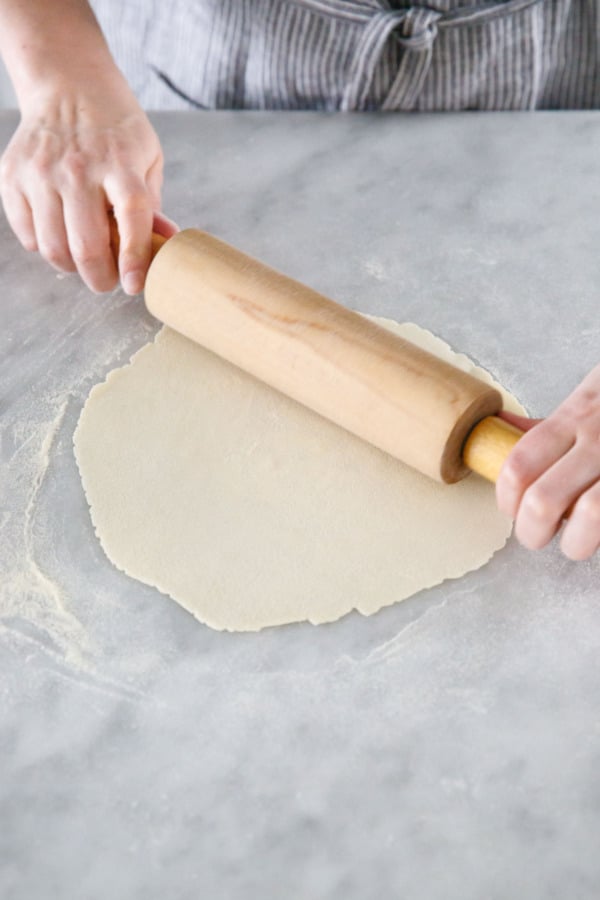
- On a lightly floured surface, roll the dough even thinner with a rolling pin.
-
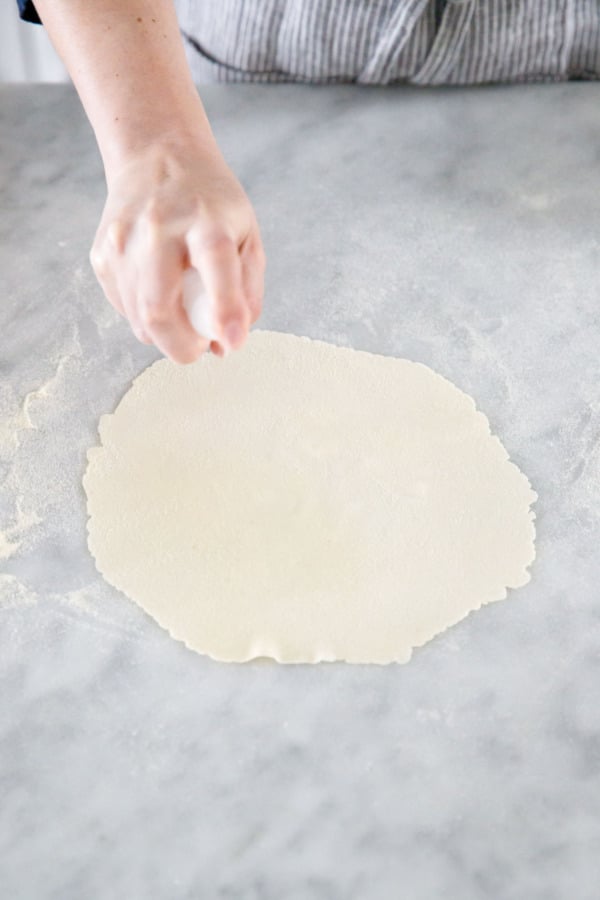
- Lightly spritz the surface of the thinly rolled dough with salt water.
-

- Carefully pick up the dough and transfer to preheated oven.
A Salty Finish
The crackers get a quick spritz of salt water before going into the oven, since straight up salt doesn’t really stick to the surface of the dough. I used a small spray bottle with a very fine mist nozzle (a clean one, you can’t ever completely clean a sprayer so reusing a bottle that once held face spray or hand sanitizer really isn’t a good idea).
I found it easiest to drape the thinly rolled dough over my hand, then spritzing evenly over the surface. Then carefully drop it into the oven on your preheated pizza stone. (I drape the dough between my hands, then quickly pull them wide and out to drop the dough straight down onto the pizza stone, but it’s an action that may take a bit of practice. You can also use a flour-dusted pizza peel too if you find that easier to handle).
While the salt water spritz step is optional, keep in mind that your crackers will cook more quickly if you skip it, so keep a close eye on it as it bakes.
-

- Bake on a preheated pizza stone for 1.5 minutes.
-
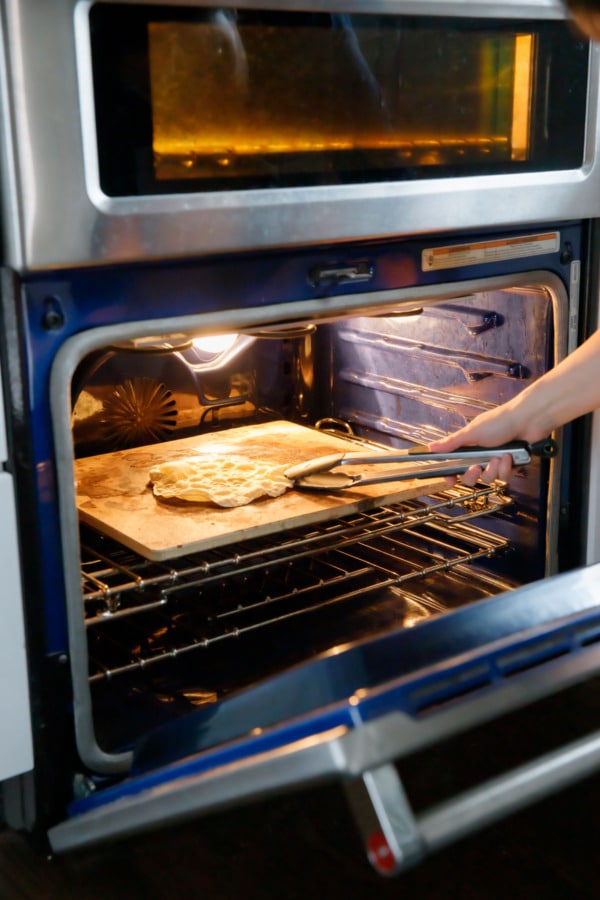
- When bubbly and beginning to brown, flip cracker using tongs.
-

- Bake for 1-2 more minutes until crisp and golden brown around the edges.
Cook Time
The time these crackers need in the oven depends on a number of factors, including the thickness of the dough, whether you are using a pizza stone or baking pan, if you skip the salt water spritz, and so forth.
If you use an upside down baking sheet instead of a pizza stone, just be sure your pan is heat safe up to 475 degrees (many nonstick or coated cookie sheets cannot be used at that high temperature).
It may take a trial or two to get the proper timing. For us, the crackers needed about 3 minutes total max. Start by baking for about 90 seconds, then flip, and cook for another minute or two more. If your dough is thicker, it will need slightly more time. Crackers baked without the sea salt water spritz will need less time.
If your crackers puff up with larger bubbles, the crackers will also be done sooner (if this happens, try rolling your dough even thinner; you can also poke over the surface of the dough with a fork).
Ultimately you’re looking for a nice crispness (the cracker should not ‘droop’ or sag when you pick it up with tongs), with a light golden brown color around the edges and on bubbles, but still pale in between (if they are entirely golden over the whole surface they are overbaked).
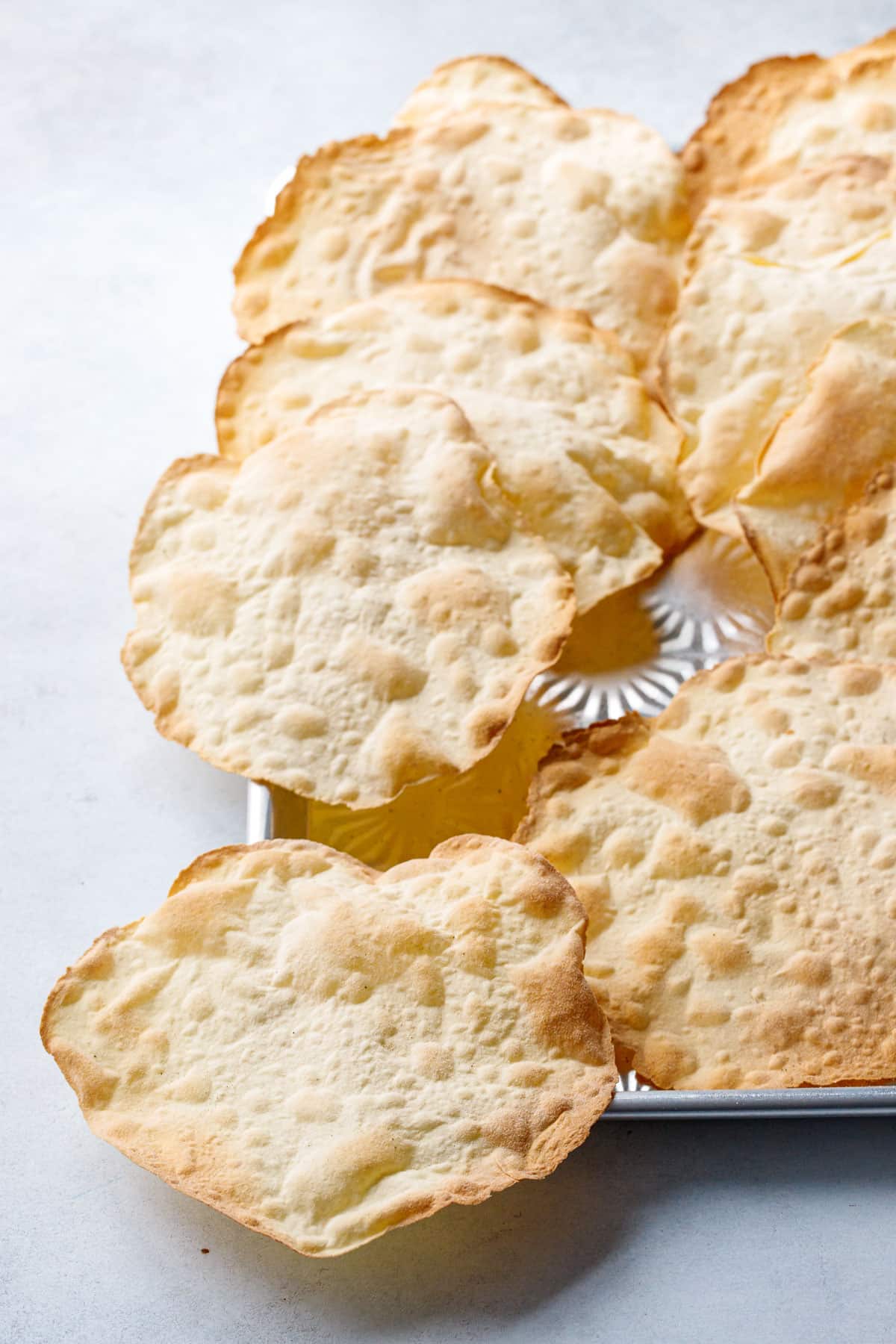
Flour Power
This recipe calls for semolina rimacinata flour (also called semola di grano duro). Semolina is the purified milling of durum wheat, and the rimacinata variety is a very finely milled version (rimacinata translates to ‘reground’ in Italian, or twice milled). It has a slightly yellowish hue and higher protein content than regular flour.
It’s really worth ordering semolina rimacinata for this recipe. (Honestly coarse semolina is really only good for dusting pizza peels to keep the pizza dough from sticking). If you make homemade pasta with any frequency, or would like to, semolina rimacinata is the absolute best flour to use for (my homemade sourdough pasta recipe calls for semolina rimacinata.)
As for replacing the semolina with all purpose or bread flour… it will work in the sense that you will end up with a cracker, but it’s not going to have quite the same texture, flavor or color as it would if made with semolina rimacinata.
Substitutions for semolina rimacinata:
Semolina/semola: more coarsely ground semolina flour can often usually be found in regular grocery stores (Bob’s red mill has a semolina product). Using a coarser semolina flour will result in a crispy cracker, but the dough cannot be rolled quite as thin, and the final cracker will be much coarser in texture and not as thin and delicately crispy. Still good, but the crackers made with the super fine semolina were much better.
All-purpose/00/bread flour: technically, if you swap regular flour for the semolina flour in this recipe you will end up with a cracker, so it’s not like it will totally fail, but what you make won’t be anything close to an authentic Sardinian parchment cracker. When testing a batch with all AP flour, I found the flavor to be rather dull (sort of like those flavorless ‘water’ crackers you see on cheese boards). Using semolina flour adds a richness and, dare I say, butteriness, that AP flour simply cannot match, not to mention a gorgeous yellow color. The dough made with AP flour also has a tendency to balloon (think a really thin pita bread), for that reason you’ll definitely need to poke the surface with a fork before baking.
Honestly, if you don’t want to track down the semolina flour for this recipe, you may as well just make my sourdough crackers with olive oil & herbs, the result will be much more flavorful.
Remember, when substituting flours, be sure to use an equal amount by weight, not volume (semolina flour is much denser and will not have an equal weight cup for cup with AP flour).
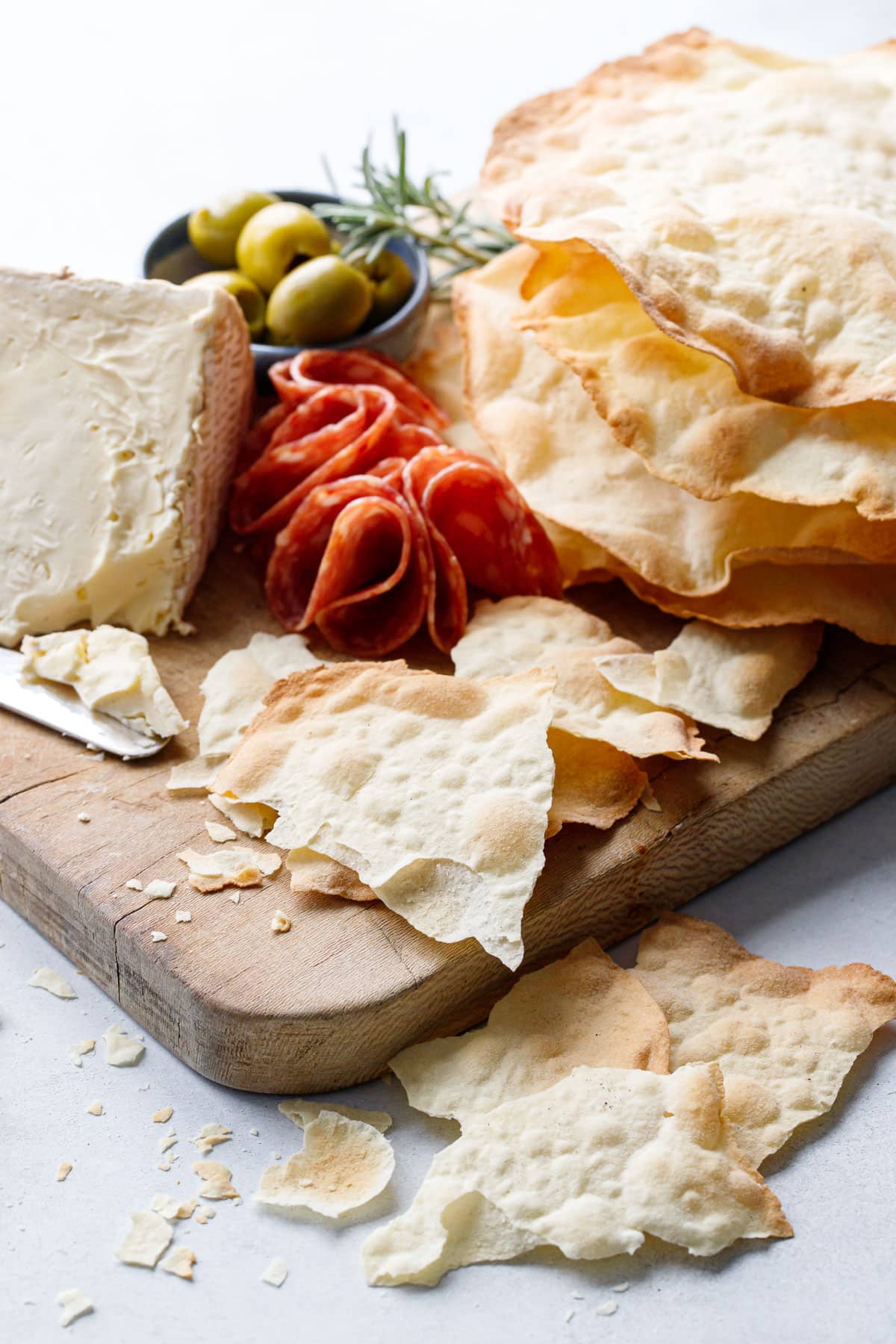
Serving & Storage
Serve these crackers in a big pile at your next social event, letting your guests break them apart and top them with various cheeses, meats and jams.
While they are most traditionally served with a slice of hard cheese like pecorino, our absolute favorite way to serve these crackers is with a soft cheese (our favorite is a brie-like triple creme cheese from Trader Joe’s called Saint Andre), topped with a dollop of homemade pepper jelly. Seriously, perfection in a bite.
While 20 crackers might seem like a lot, don’t be surprised if you and your husband manage to put away a dozen of them in a single sitting (ahem).
Store your parchment crackers at room temperature in an airtight bag or container (a stack in a cake carrier works quite well). Assuming it’s not super humid or anything, they should keep just fine for weeks (though I highly doubt they’ll last that long).
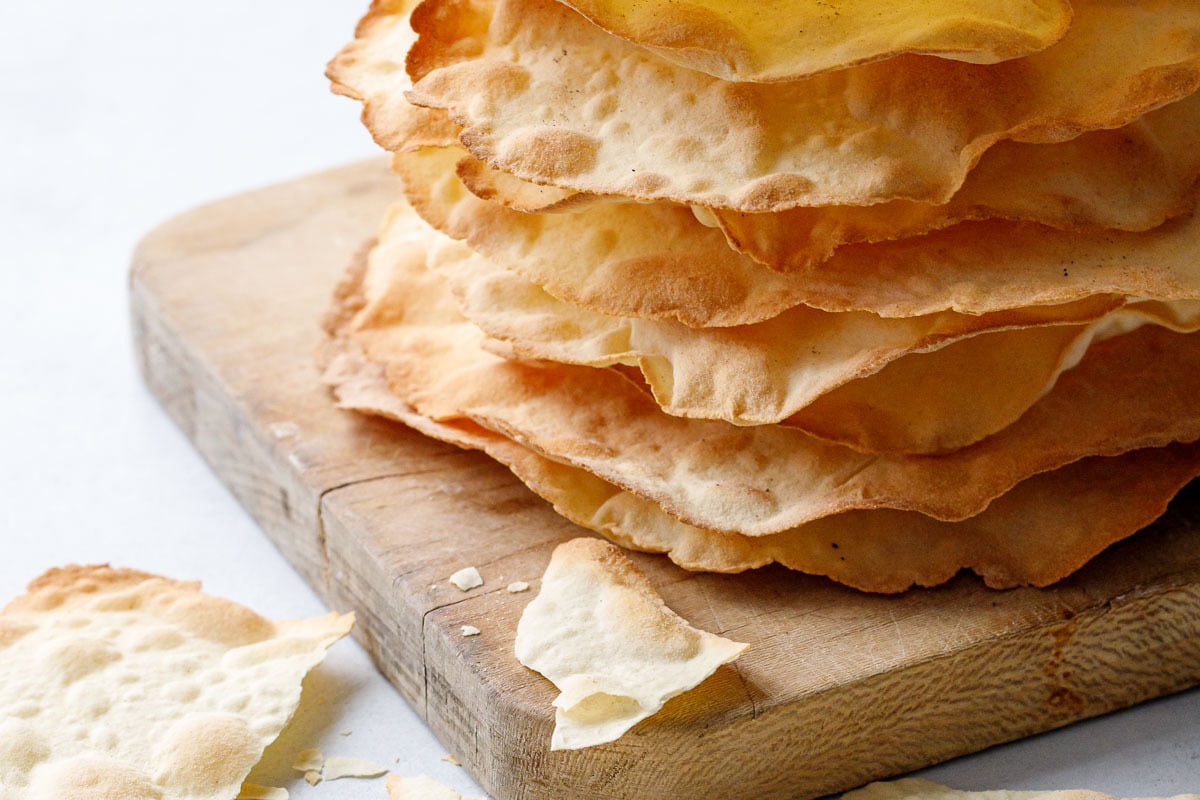 Yield: about 20 crackers
Yield: about 20 crackers
Sourdough Semolina Parchment Crackers
Cook Time: 3 minutes Total Time: 2 hours These ultra thin and delicately crispy parchment crackers are made with semolina flour and sourdough starter for a yeasty, buttery flavor that’s perfect for your next charcuterie board. 5 stars (1 review) Print Recipe Pin Recipe Leave a Review
Ingredients
- 1 cup / 200 g mature sourdough starter*, at 100% hydration
- 1¼ cups / 150 g semolina rimacinata flour*
- 2 teaspoons / 10 g extra virgin olive oil
- ½ teaspoon fine sea salt
- 1 tablespoon warm water, more or less as needed
Sea salt spritz:
- ½ cup filtered or spring water
- 1 teaspoon fine sea salt or kosher salt, not iodized
Instructions
- In a bowl, combine sourdough starter with semolina flour, olive oil, salt, and 1 tablespoon warm water. Mix to combine, kneading until the dough comes together, adding a bit more water if needed to produce a firm dough that’ still slightly tacky (but not sticky). Continue to knead for 3 to 5 minutes or until very smooth (unless you used a coarser semolina flour, the dough should feel soft like the skin of your earlobe).
- Wrap ball tightly in plastic wrap and refrigerate for at least 30 minutes or up to 24 hours.
- Place a pizza stone on oven rack positioned in the lower third of your oven. (If you don’t have a pizza stone, you can use an upside down sheet pan, just be sure it is rated for high temperatures as many coated/nonstick cookie pans are not). Turn on oven to 475 degrees F and allow to preheat for at least 45 minutes.
- Heat 1/2 cup water in the microwave or in a saucepan with 1 teaspoon of fine salt, stirring until salt is completely dissolved. Transfer to a clean spray bottle with a fine mist nozzle. You can also brush the salt water on with a fine bristle pastry brush.
- Divide dough into small balls weighing approximately 18-20g each (you should have about 18 to 20 balls). Dripe a piece of plastic wrap over top to keep them from drying out as you work.
- Flatten one ball of dough with your palm; lightly flour both sides. Run through a pasta roller, increasing the thickness setting one notch each pass, dusting with more flour as needed. Rotate the dough 1/4 turn between each pass until the dough is as wide as the pasta roller, then continue in the same direction (this will keep the dough as round as possible rather than a long thin oval). You want to roll it as thin as your machine will go (for me this was #8).
- Lay the round of dough on a lightly floured surface and roll it even thinner using a rolling pin, working in short, firm strokes from the center out. (You can also skip the pasta rollers and just roll the crackers completely by hand.) Continuously move and rotate the dough on the counter to keep it from sticking, dusting with more flour as needed. You’re looking for a super thin piece of dough that, if you placed it on top of a sheet of music, you’d be able to see the black and white contrast through the dough (though probably not the individual notes).
- Spritz a light layer of salt water over the top of the dough. Carefully transfer to the hot pizza stone, spritzed side up. Bake for 90 seconds or until puffed and bubbly, then flip and cook for another 1 to 2 minutes more, or until cracker is crisp (it will not ‘droop’ when you pick it up with the tongs), and edges and bubbles are light golden brown but areas in between are still pale. Remove from oven and place on a cooling rack. Repeat with remaining dough.
- Crackers will keep in an airtight container at room temperature for up to one month.
Notes
- *See notes in post for a non-sourdough version and about substituting different flours.
 Dairy-Free
Dairy-Free
 Vegan
Vegan
 Vegetarian All images and text © Lindsay Landis for Love & Olive Oil.
Vegetarian All images and text © Lindsay Landis for Love & Olive Oil.
Did you make this recipe?
Let us know what you think! Leave a Review below or share a photo and tag me on Instagram with the hashtag
#loveandoliveoil.







